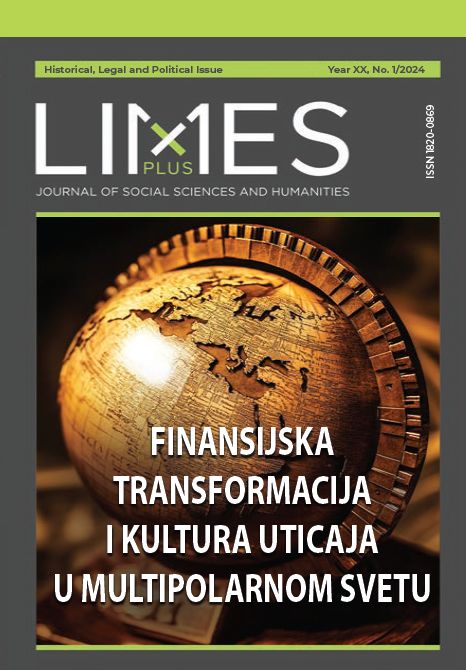STVARANJE MULTIVALUTNOG SISTEMA U SVETU
CREATION OF A MULTICURRENCY SYSTEM IN THE WORLD
Author(s): Ljupka Poznanić, Zeljko Jokic, Nela BosnićSubject(s): National Economy, Supranational / Global Economy, Financial Markets
Published by: HESPERIAedu
Keywords: standards of value; currencies; Bretton Woods institutions; de-dollarisation; multi-currency system
Summary/Abstract: Which criteria should be used to determine the value or price of goods, services, labour, and even a country’s currency to pay for them, is the question of all questions continuously asked since the introduction of trading between commodities and money up to the present day? At the end of the 19th and the beginning of the 20th century (from 1870 to 1913), gold and silver served as international standards for establishing the value of currencies worldwide. However, this standard was short-lived due to its adverse effects, primarily leading to increased unemployment among workers, but also due to the outbreak of the First World War, and it was abandoned. Since the end of the Second World War, particularly with the establishment of the Bretton Woods institutions - the International Monetary Fund and the World Bank - we have become accustomed to the U.S. dollar being the world’s most important currency, so by the onset of the eighth decade of the 20th century, it comprised approximately two-thirds of the world’s foreign exchange reserves, and even today its share exceeds half of the global foreign exchange reserves. All global economic statistics, including countries’ GDP, per capita income in some countries, the value of exports and imports, national debts, the prices of commodities traded on exchanges (oil, gas, gold, and other precious metals) and all other economic indicators are globally stated in a single currency – U.S. dollar. In August 1971, when Germany requested the United States to deliver the owed amount in gold, it became apparent that the U.S. did not possess that amount of gold, and consequently, overnight, America terminated the gold-exchange standard that had been instituted during the establishment of the Bretton Woods institutions. The payment to Germany was made in U.S. dollars, and the dollar was no longer backed by gold. The Statute of the International Monetary Fund was soon amended, so the U.S. dollar was replaced by the so-called “paper gold”, represented by a basket of currencies called Special Drawing Rights (SDR). During the 1970s, to avoid greater use of the American currency, developed countries in Europe and beyond began incorporating their local currencies (German mark, French franc, British pound, Italian lira, Japanese yen, etc.) into payment transactions, to allow themselves to pursue independent monetary policies, and this marked the inception of a multi-currency world. In the final decade of the 20th century, preparations for the introduction of a common currency by several members of the European Union gained momentum, and by the early 21st century, the European Monetary Union was created, comprising 20 countries today. As a response to the growing frequency of sanctions imposed by the U.S. and most Western countries on certain countries, primarily Russia, but to some extent also China, an informal international organization - BRICS was founded in the early decades of the 21st century, and it established its own development banks ten years ago (AIIB and NDB), with the aim of creating a multi-currency system. In 2023, the member countries of the aforementioned association took a significant step towards establishing a multi-currency system by incorporating their national currencies (yuan, ruble, rupiah, real, etc.).
Journal: LIMESplus
- Issue Year: 2024
- Issue No: 1
- Page Range: 119-142
- Page Count: 24
- Language: Serbian

